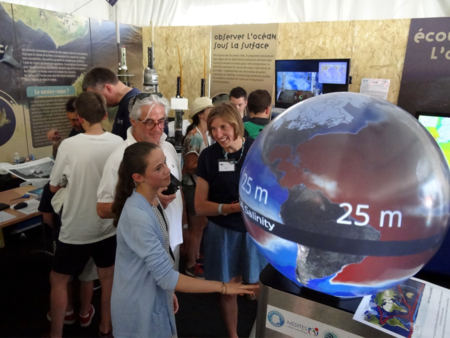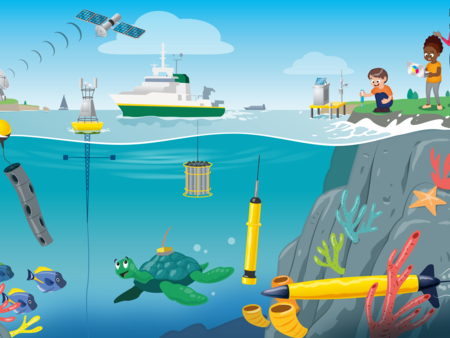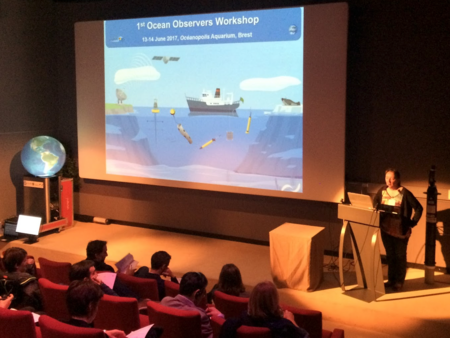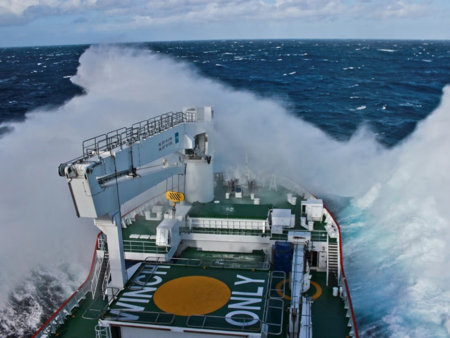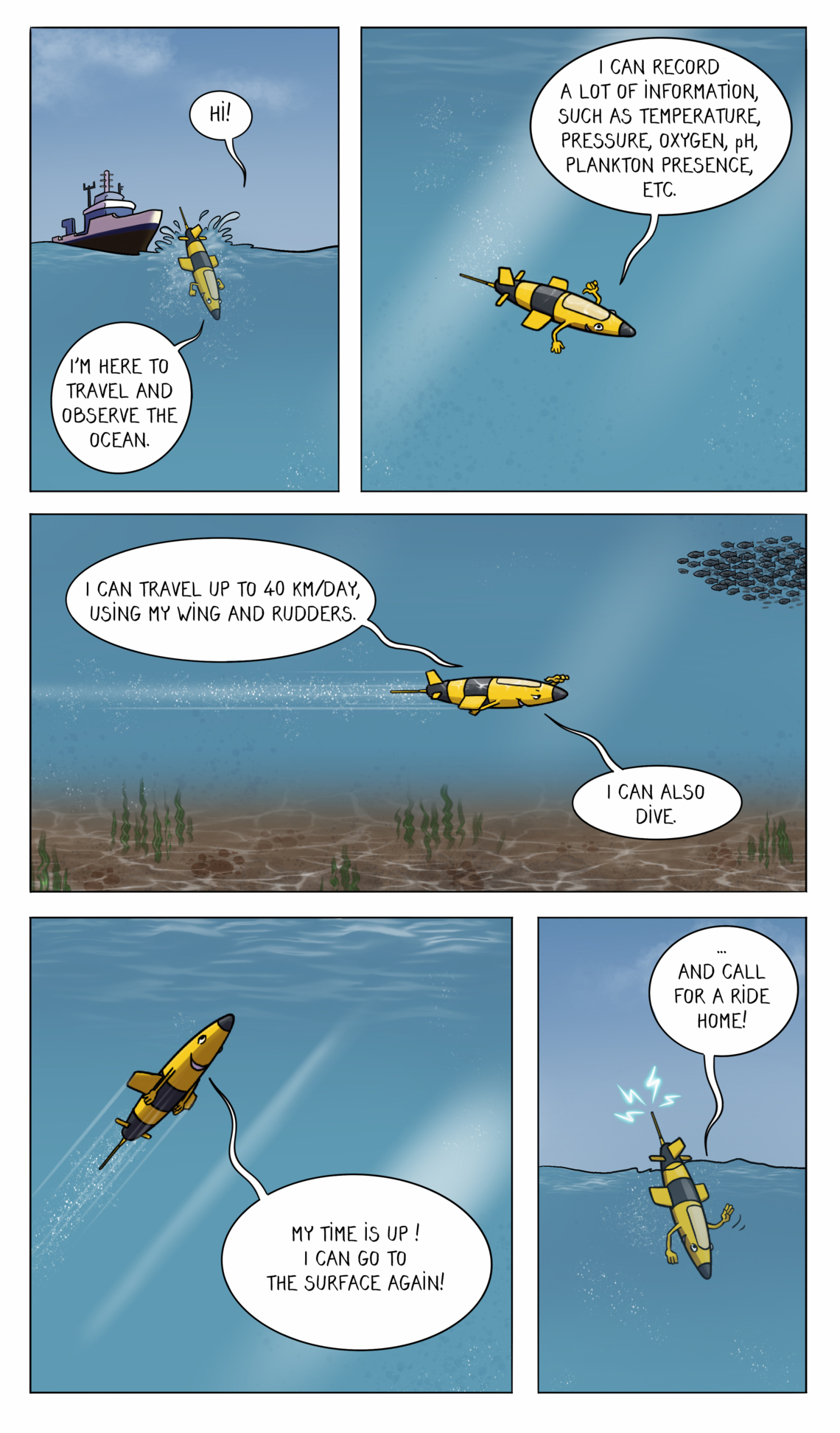OceanGliders
What is a glider?
First conceived in the late 1980s, a glider is an autonomous underwater vehicle with no thruster or internal engine. It performs saw-tooth trajectories from the surface to depths of 1,000m along programmable routes. It uses a pump to change its floatability over time, allowing it to rise and sink as it pleases.
How does it work?
A glider can achieve forward speeds of up to 40 km/day using wings and rudders.
It is semi-piloted from the shore, which means that it uses ocean currents to move, but it can be piloted by scientists to specific locations.
Once the waypoints are pre-programmed, the glider is free to collect physical and biogeochemical ocean observations for months and over thousands of kilometers with its various sensors and instruments. After having collected ocean observations, the glider ends its journey by surfacing and transmitting its position for recovery.
They can be deployed from a wide range of boats.
What kind of ocean observations are collected?
The main parameters measured are:
- Temperature
- Salinity
- Currents
- Pressure
- Oxygen
- Nutrients
- Ocean sound and color
- Plankton
- Fish tracking
- Acidification (pH)
Salinity measures how much salt is present in the sea water.
In the ocean, the water produces a certain amount of force on every object or living being inside it. It comes from the weight of water above and is called pressure. The deeper you go, the more water there is above you, the higher the pressure.
Plankton include very small animals, called zooplankton, and plants, called phytoplankton, that live in water and can’t outswim the current.
What are the observations helping with?
Here are some examples of how the information gathered can be used.
Operational services
One of the core missions of the glider program is to increase understanding and prediction skill for extreme events such as storms, hurricanes or typhoons.
Another is understanding boundary currents and their variability.
To know more, you can consult this page : OceanGliders Achievements.
Boundary currents are ocean currents whose characteristics are determined by the presence of a coastline.
Climate change
Gliders help with climate analysis, understanding climate cycles and monitoring ocean acidification (see below).
Ocean health
Since they survey plankton and fish, gliders provide valuable information on ecosystems health. Plankton are the first species in the food chain, they are essential for a healthy ecosystem.
Glider observations also help with monitoring ocean acidification, as mentioned above, and deoxygenation. These two phenomena are threatening marine life by making it difficult to grow shells, or to breathe.
Where can we find it?
Gliders are found in both the coastal and open ocean.
OceanGliders key numbers
- Maximum depth: 1,000m (soon to be 6,000m)
- Sampling cycle: 0.5 to 5 hours
- Speed: 0.5m/s
- Deployment time: 3-6 months
- Distance covered during deployment: 2,000km
- OceanGliders starting year: 2016
Learn more about OceanGliders
OceanGliders is an international program created in 2016 to support active coordination and enhancement of the worldwide glider activity. The program shares the scientific knowledge and practices needed to collect and analyze ocean observations.
If you want to learn more about this program, visit the OceanGliders website.

